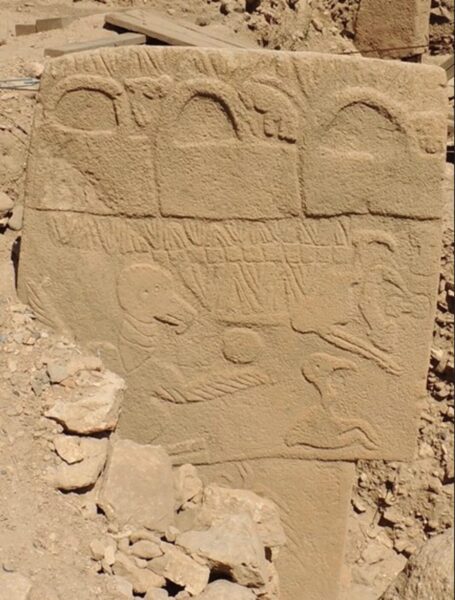The World’s Oldest Calendar Discovered in Turkey » Explorersweb
Archaeologists have discovered the world’s oldest calendar. The ancient carving of the sun, moon, and various constellations sits on a pillar in Göbekli Tepe in southern Turkey and is 12,000 years old.
Researchers believe that ancient people used this so-called lunisolar calendar to mark the changing of the seasons. Apparently, it even recorded a falling comet. If the researchers are correct, this predates any other such calendar by thousands of years.
The Göbekli Tepe site is home to the world’s oldest known manmade structures. They predate Stonehenge by over 6,000 years. The site is a complex of temple-like enclosures whose exact purpose is unclear. Many archaeologists think it was central to the rituals of the time. Martin Sweatman, the author of the new study, suggests the site recorded the movements of the sun, moon, and stars.

Photo: Martin Sweatman/University of Edinburgh
Mysterious markings
One of the pillars has 365 V-shaped markings etched into the stone. “Each V could represent a single day,” said the University of Edinburgh in a statement. “This interpretation allowed researchers to count a solar calendar of 365 days on one of the pillars, consisting of 12 lunar months plus 11 extra days.”
A V that sits around the neck of a bird-like animal may represent the summer solstice constellation at the time.
Sweatman has studied the carvings for years but didn’t recognize the significance of the V symbols until someone suggested that they might be markings on a lunar calendar. Once he considered this interpretation, everything became clear.
Another pillar seems to portray the comet fragments that hit Earth almost 13,000 years ago. The comet wiped out several large animal species and triggered a mini ice age lasting 1,200 years. It was the most catastrophic impact since the meteor strike that killed off the dinosaurs about 66 million years ago.
The images show the comet fragments emerging from the direction of Aquarius and Pisces. Researchers think the carvings were created to mark the date of the comet strike and that this was an important moment in the development of ancient civilizations.
“It appears the inhabitants of Göbekli Tepe were keen observers of the sky,” said Sweatman.
This is to be expected, given that a comet strike devastated their world. It might even have triggered the development of civilization by starting a new religion and by prompting advances in agriculture to cope with the cold climate.
“Possibly,” Sweatman added, “their attempts to record what they saw are the first steps toward the development of writing millennia later.”



